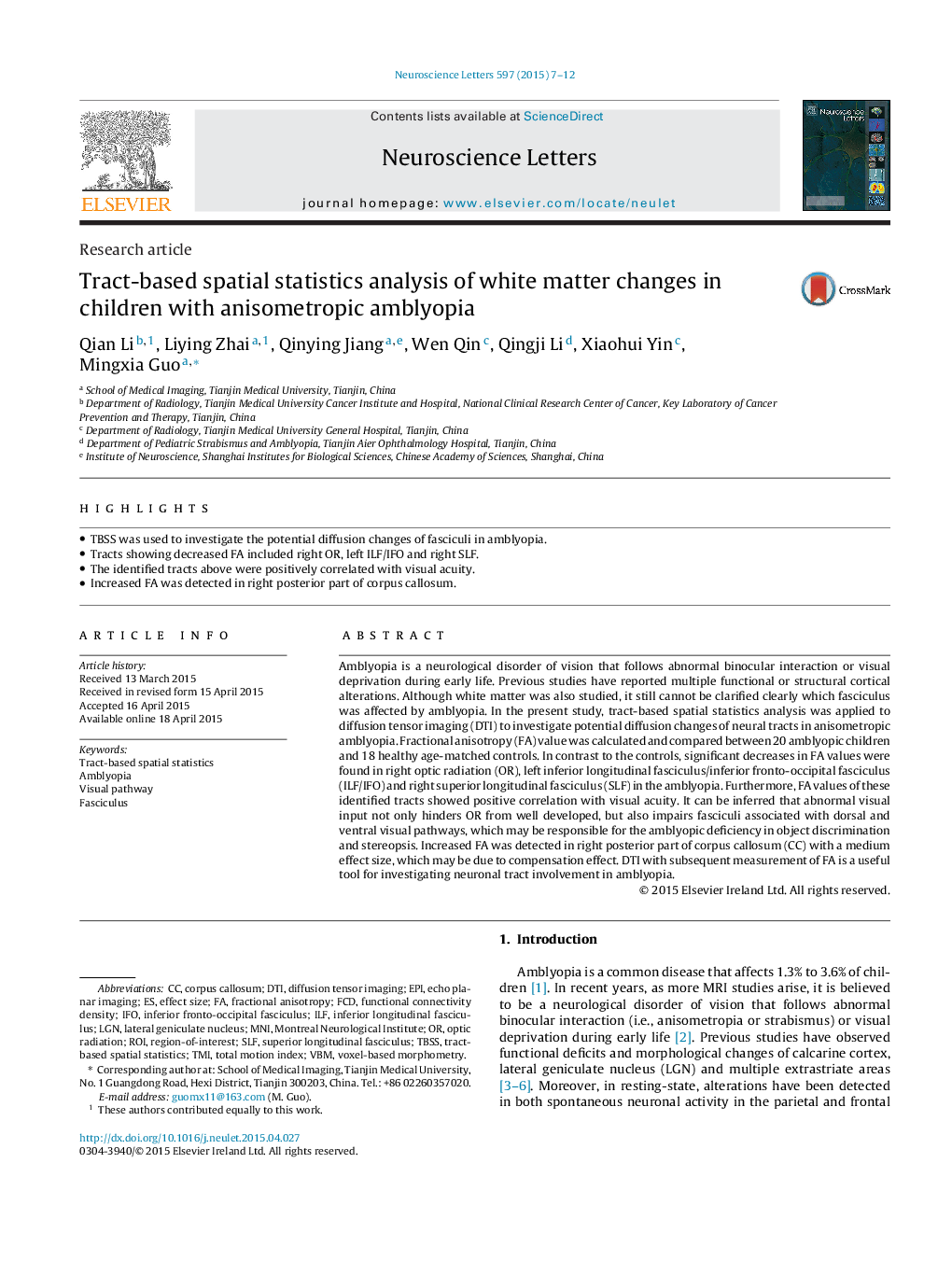| Article ID | Journal | Published Year | Pages | File Type |
|---|---|---|---|---|
| 6280688 | Neuroscience Letters | 2015 | 6 Pages |
Abstract
Amblyopia is a neurological disorder of vision that follows abnormal binocular interaction or visual deprivation during early life. Previous studies have reported multiple functional or structural cortical alterations. Although white matter was also studied, it still cannot be clarified clearly which fasciculus was affected by amblyopia. In the present study, tract-based spatial statistics analysis was applied to diffusion tensor imaging (DTI) to investigate potential diffusion changes of neural tracts in anisometropic amblyopia. Fractional anisotropy (FA) value was calculated and compared between 20 amblyopic children and 18 healthy age-matched controls. In contrast to the controls, significant decreases in FA values were found in right optic radiation (OR), left inferior longitudinal fasciculus/inferior fronto-occipital fasciculus (ILF/IFO) and right superior longitudinal fasciculus (SLF) in the amblyopia. Furthermore, FA values of these identified tracts showed positive correlation with visual acuity. It can be inferred that abnormal visual input not only hinders OR from well developed, but also impairs fasciculi associated with dorsal and ventral visual pathways, which may be responsible for the amblyopic deficiency in object discrimination and stereopsis. Increased FA was detected in right posterior part of corpus callosum (CC) with a medium effect size, which may be due to compensation effect. DTI with subsequent measurement of FA is a useful tool for investigating neuronal tract involvement in amblyopia.
Keywords
ROIIFOILFFCDLGNMNIEPIVBMSLFCorpus callosumDTITBSSTMItract-based spatial statisticsEffect sizeOptic radiationinferior fronto-occipital fasciculusfunctional connectivity densityecho planar imagingdiffusion tensor imagingAmblyopiasuperior longitudinal fasciculusinferior longitudinal fasciculusVisual pathwayregion-of-interestvoxel-based morphometryMontreal Neurological Institutefractional anisotropylateral geniculate nucleus
Related Topics
Life Sciences
Neuroscience
Neuroscience (General)
Authors
Qian Li, Liying Zhai, Qinying Jiang, Wen Qin, Qingji Li, Xiaohui Yin, Mingxia Guo,
